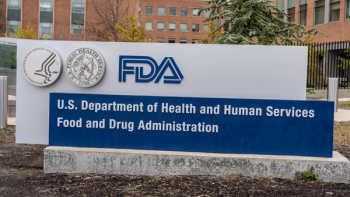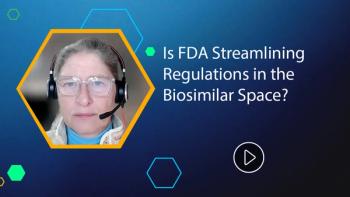
Swerving the Talent Trap
Highly skilled pharma staff are obliged to devote hours to routine administrative tasks updating product information. Technology can free them from this burden, writes Dr. Jutta Hohenhörst.
Soaring regulatory requirements are tying up RA and QA talent: skilled and experienced people who must now devote hours to mind-numbing administrative tasks to ensure updated product information is accurate and compliant. And the last thing life sciences firms need is to lose valued regulatory skills now, writes Dr. Jutta Hohenhörst.
Regulatory requirements are increasing all the time in life sciences, and recently it has seemed as though the rate of release of new guidelines and directives is accelerating.
Beyond the authorities’ need to set new standards to safeguard patients, there is a growing market expectation for transparency around everything that is happening within a company and along the supply chain. All of this is creating more red tape for the industry: demands that must be serviced and managed. The more rules there are, and the more frequently these change, the greater the risk of something going wrong. Similarly the more products, variants and markets a company is dealing with, and the shorter the release cycles, the greater the controls needed across documentation, packaging and labelling to ensure nothing slips through the cracks.
Companies rarely get off lightly if they fall foul of regulations, which could be something as simple as failing to spot a misprint until it’s too late, or neglecting to meet new guidelines in a given market. If it’s a children’s medicine, for example, the simplest error in how the product should be stored or taken could have dangerous consequences. Errors creep in so easily too. People make mistakes, especially if they’re tired, busy or stressed.
Risk versus reward
Avoiding this kind of risk and negative market exposure is a full-time job, and the workload is increasing daily. Even where companies have the most extensive and comprehensive Regulatory Affairs and Quality Assurance departments, the strain is being felt.
In many cases, it is highly qualified regulatory and QA professionals – people with doctorates, and years of experience – who are being called up to check amended labels and patient literature to ensure it is correct, up to date and compliant with the latest guidelines.
But these skills are in short supply. A 2014 survey of European recruitment and staffing trends in the life sciences sector by Real Staffing found that Quality Assurance and Regulatory Affairs are among the main growth disciplines. The same study also identified a gap in the available talent pool: a third of firms felt this had grown. Further analysis revealed a growing concern among employers that failure to keep employees stimulated and motivated could result in losing key people.
Manual tasks are demotivating and a poor use of qualified professionals’ time. The cost per hour of time spent on non-value-adding administrative checks doesn’t just include that person’s salary. It also includes tax, benefits, insurance, holidays, office space, training, recruitment costs and more, which can more than double the gross salary figure.
Losing a skilled employee can cost up to twice their annual salary, especially for a high-earner. Research by TalentKeepers (The Dirty Truth: Employee Turnover Costs, 2015) suggests that morale and culture are now the largest casualty of employee turnover and a lack of engagement, followed by productivity, team performance and stress. Service quality can also suffer if people’s hearts aren’t in the task, which is the last thing firms need when attention to detail is everything.
But what is to be done when attention to detail is everything, and the risks are so high?
Is automation an option?
Usually in these situations, technology comes to the rescue, alleviating heavily repetitive manual tasks so that skilled employees can use their time and talents more constructively. In a sensitive customer literature and labelling context, that hasn’t always been possible – there are so many subtleties at work, that companies haven’t been able to trust automated solutions to make the right judgement calls.
Although software can never take the place of a human expert in its ability to spot subtle variances in meaning, it can reduce the rounds of checks - releasing time for the specialists to focus on more challenging and rewarding tasks.
Technology is getting better, too.
In the past, attempts to automate document checking were hampered by technology limitations, language restrictions, and insufficient accuracy to fit the purpose. Traditional text comparison tools relied on converting content to PDF format for visual comparison, an approach that is inadequate for heavily regulated markets. Converting from one format to another can introduce anomalies, and the process doesn’t allow teams to work from original documents which are an important mid-way through a drug approval process.
In addition, document conversion for the purposes of comparison is a violation of GMP processes and can lead regulators to question the validity of comparisons, and the entire packaging review process. Where file conversion is taking place, or comparisons rely on certain fonts, language or specialist content knowledge, accuracy starts to suffer. And when teams can’t depend on automation for the highest levels of accuracy, their confidence in technology diminishes until they stop using the software, undermining any return on investment.
But things have moved on, and it’s now possible to take a more intelligent approach to text comparison which is a lot more reliable and robust, meeting the stringent needs of life sciences. Not only can companies access the facilities cost-effectively ‘as a service’ via the cloud (instead of having to pay for licences up front), the software works by comparing the underlying universal code (‘Unicode’) rather than the actual text shown on the page. This means teams can accurately compare content irrespective of the font or language.
Using Unicode means data is retrievable with a simple keyword search in a database or document management system, and allows content to be transferred to other applications without risk of corruption. This kind of approach offers unprecedented levels of accuracy and speed.
The best of both worlds
Automation of regulatory checks doesn’t replace the need for human oversight, but it does allow professionals to focus their time where it is needed. This is because the software is able to home in on the subtlest changes and anomalies, avoiding the need to go through entire documents manually.
To give an idea, where it would take a human a week to spot all the differences between two versions of the novel Huckleberry Finn (which runs to approximately 500,000 words), and with no guarantee that all anomalies will be spotted, Unicode based automated text comparison takes just three minutes to reliably pinpoint even the tiniest variations. A typical like-for-like 5-10 page document comparison will take a matter of seconds, versus 3-4 hours done manually by a human, even if the language is unfamiliar.
This frees up expert time for higher-level verification/decision-making and frontline regulatory/quality assurance work. Our own research has found that professionals can save two hours or more of their valuable time by introducing reliable automation. Average savings translate to five hours a week on manual proofreading/text verification. Extrapolating this against the average salary of a specialist Regulatory Affairs employee (estimated at $85,000 or EUR 76,000), this works out at a yearly saving/productivity increase of $13,500 (EUR 12,000) per RA user.
Reducing dependence on manual processes isn’t just a risk avoidance or insurance strategy. In life sciences, the rise in merger and acquisition activity and the growing trend of smaller batch numbers and increased drug personalisation means label demands are soaring and becoming more complex to manage. Each new demand, each new regulation multiplies the burden on RA and QA functions to be responsive, accurate and thorough at a time when there is little or no skilled capacity to spare.
As regulatory demands continue to increase, the situation will get worse long before it gets better, which means life sciences firms need to find new ways of managing the workload -- and of balancing the needs of valued professionals they need to hold onto.
Dr. Jutta Hohenhörst (
Newsletter
Lead with insight with the Pharmaceutical Executive newsletter, featuring strategic analysis, leadership trends, and market intelligence for biopharma decision-makers.





